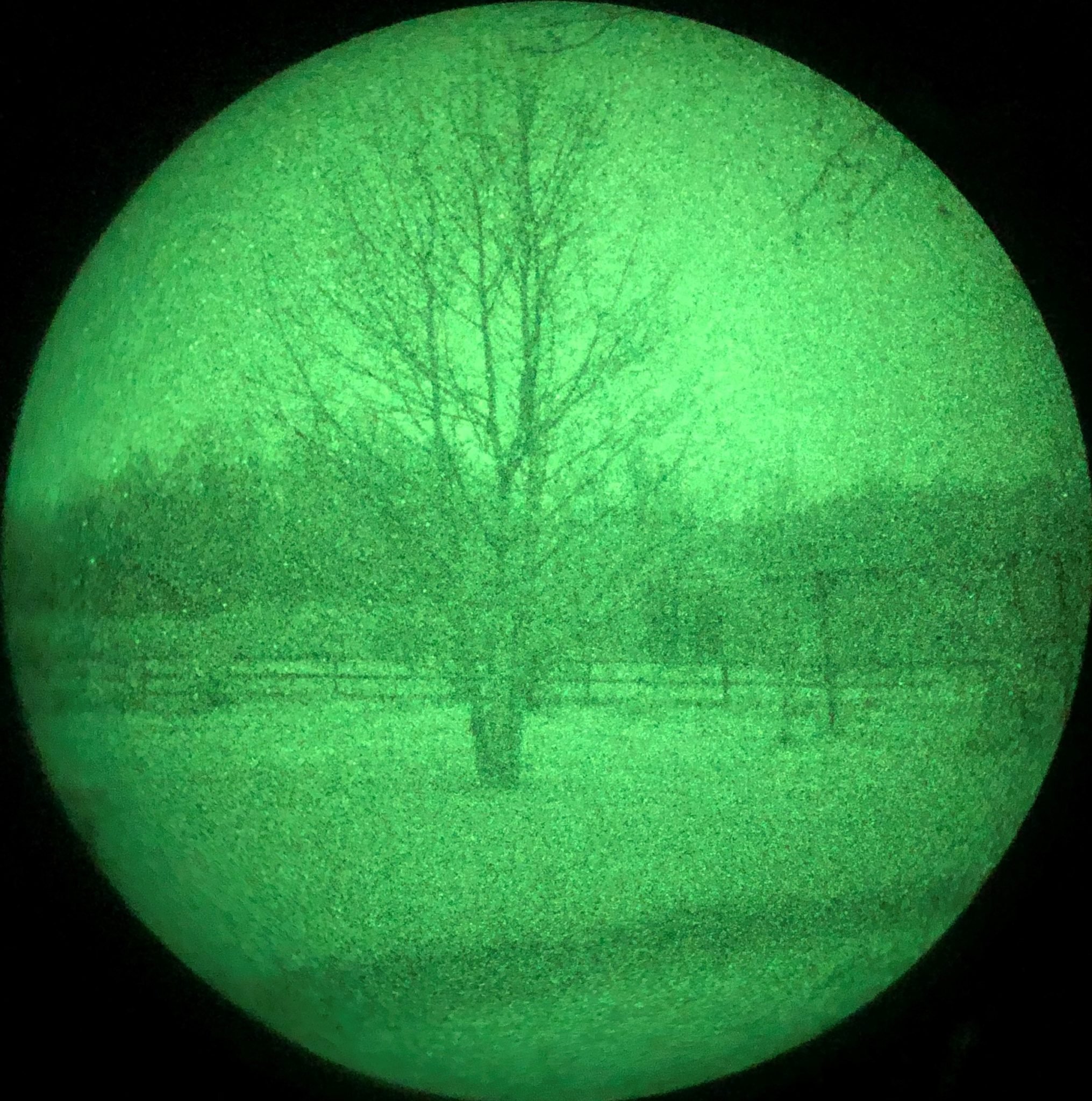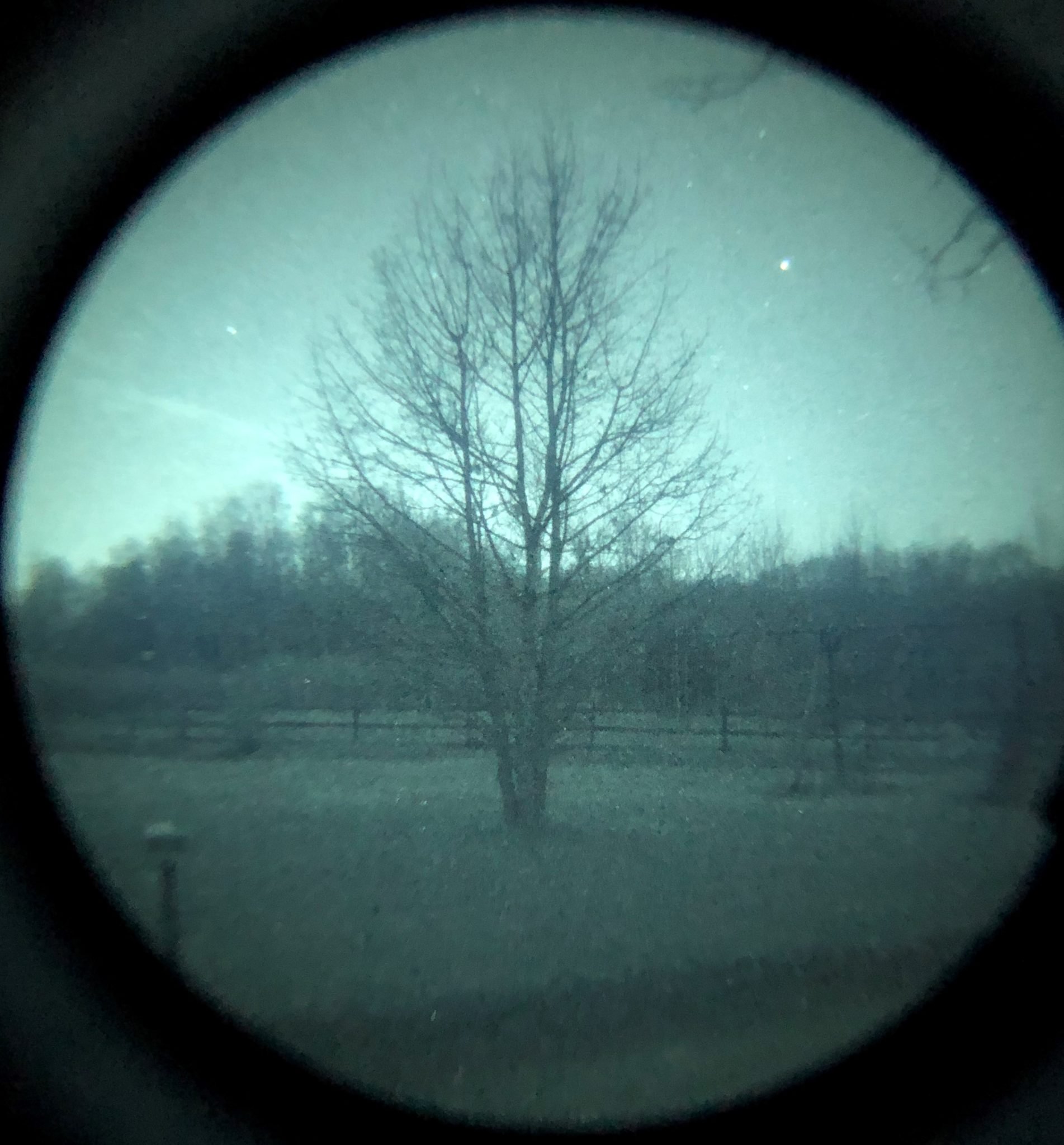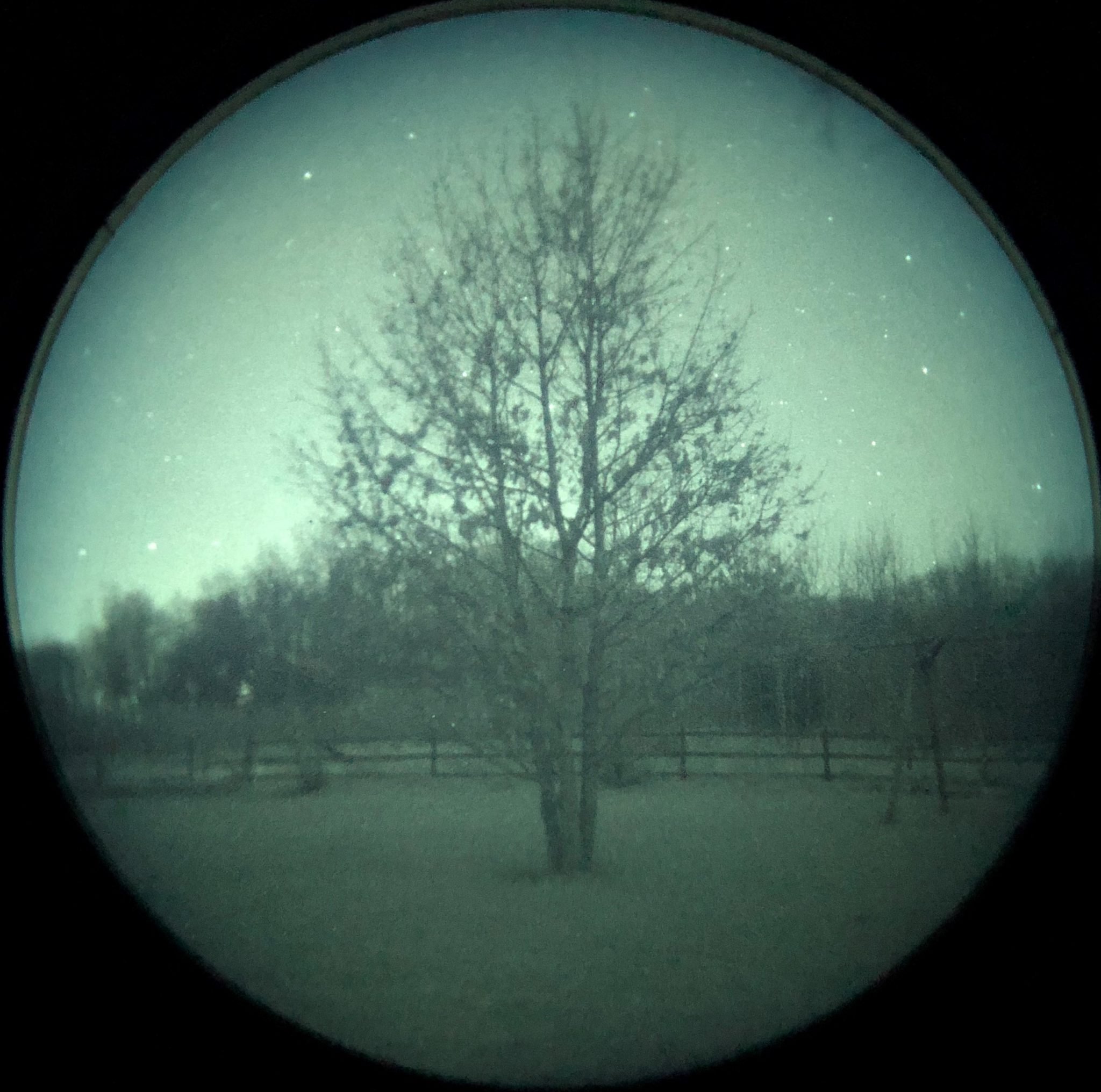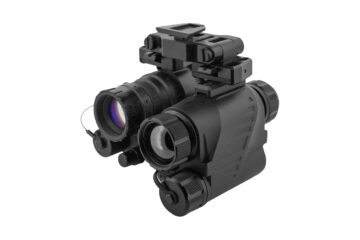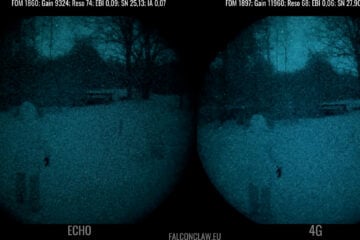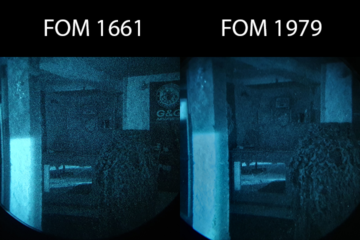When you are looking for MNVD (Monocular Night Vision Device), then most probably you have a lot of unanswered questions like:
- How does Gen2+ compare to Gen3?
- Should I buy Gen3 instead of Gen2?
- How about Gen1?
- Can you have cheap and good night vision device?
- There are so many different Gen2+ devices – how to compare one against other?
- What accessories to consider?
Let’s try to answer those questions….
Why you should not consider Gen1+?
Initially, we did not exclude Gen1 devices from our product portfolio and were promoting Armasight Core Spark as really decent Gen1+ MNVD.
BUT….
Based on customer feedback, we stoped selling Armasight Core Spark due to its need for high power IR light. The IR light was visible to naked eye and Gen1 users revealed themselves to other players who had no light amplification ability (beside their trained eye). Basically, using Gen1 NVD gave no major advantage against players without any device.
Since a performance gain on moving from Gen1 to Gen2+ was huge and Gen1 did not help at all, we stopped selling Armasight Core Spark and put our focus in promoting wide range of Gen2 devices.
Here is a video we once did about Armasight Core Spark (at the point we were operation under name Kaliiber):
Why we don't provide Gen3 devices?
- It requires additional licenses to sell those devices and requires licences for owners to travel with Gen3 NVDs. Some of EU countries don't allow exporting your NVD without government provided export licence (like Germany, France, etc).
- In our honest opinion - for Airsoft users in EU the Gen3 is an overkill (explained later). Unless your life literally depends on it, the price jump from decent Gen2+ (Photonis Commercial / ECHO) to Gen3 does not justify the performance gain.
- We have seen devices based on Gen2+ technology that beat Gen3 devices in some environments. Especially when comparing Photonis Gen2+ against used Gen3 devices without any understanding about its specifications and used hours. Yes, there are also low-end Gen2+ devices on the market. But if you know what to look for, you can get really good devices (close to Gen3 performance) with 2x less costs then Gen3
We are not saying that Gen3 is a bad choice. For example – new Gen3’s made by Harder Digital are really good units. Just, don’t buy a Gen3 without being sure about its history and data-sheet. Our main message is that in our opinion Photonis Commercial or Photonis ECHO is everything you need for Airsoft, without any limitations on travelling within EU and approximately 2 times cheaper than a decent Gen3 (eg. Harder Digital FOM 2100+).
P.S In the US, the story is completely different. Their price jump to Gen3 is small and they don’t put much focus on developing devices in Gen2+ technology (like Photonis does in EU). In the US we would go for Gen3 without any second thought.
ECHO WP (FOM 1780) vs Harder Digital Gen3 WP (FOM 2100+)
What to consider when buying an NVD?
Stepping-stone or end-goal?
How long you are going to keep the device? Do you plan to up-grade every year or do you plan to keep this device?
If you plan to sell it:
- Buy White Phosphor (WP), its much easier to sell it. Most NVD users consider WP as an up-grade to GP (even though it is not)
- Buy a unit that has a data sheet, since your future buyers will ask for it (even though data sheets provides only half truth)
- Keep a log book – if you can prove that you have used this unit for 50 hours, instead of unknown hours, it is much easier to sell it.
If you don’t plan to sell it:
- Try both Green Phosphor and White Phosphor – you never know which works best for you. Me and Kevin, we like Green Phosphor more.
- Consider NVD as 5+ year investment. Even though you warranty is long gone after 5 years, those devices last for thousands if not ten thousand of hours. There are still devices from 90s used well in military.
- Never share it with anyone. If anyone asks to lend your device, you can always answer – “There are two things that one does not lend – your NVD and your girlfriend”<- in that priority. Jokes aside – well kept NVD will work for 10 000+ hours, while it can be ruined in 2 seconds – even with AUTOGATED.
Start with Why
Does your life depend on seeing an opponent 10-15% further away? Why? Because – the more you pay, the less additional value you get from NVD.
Photonis 4G WP = ~6500€
Photonis Commercial WP = 2 550€
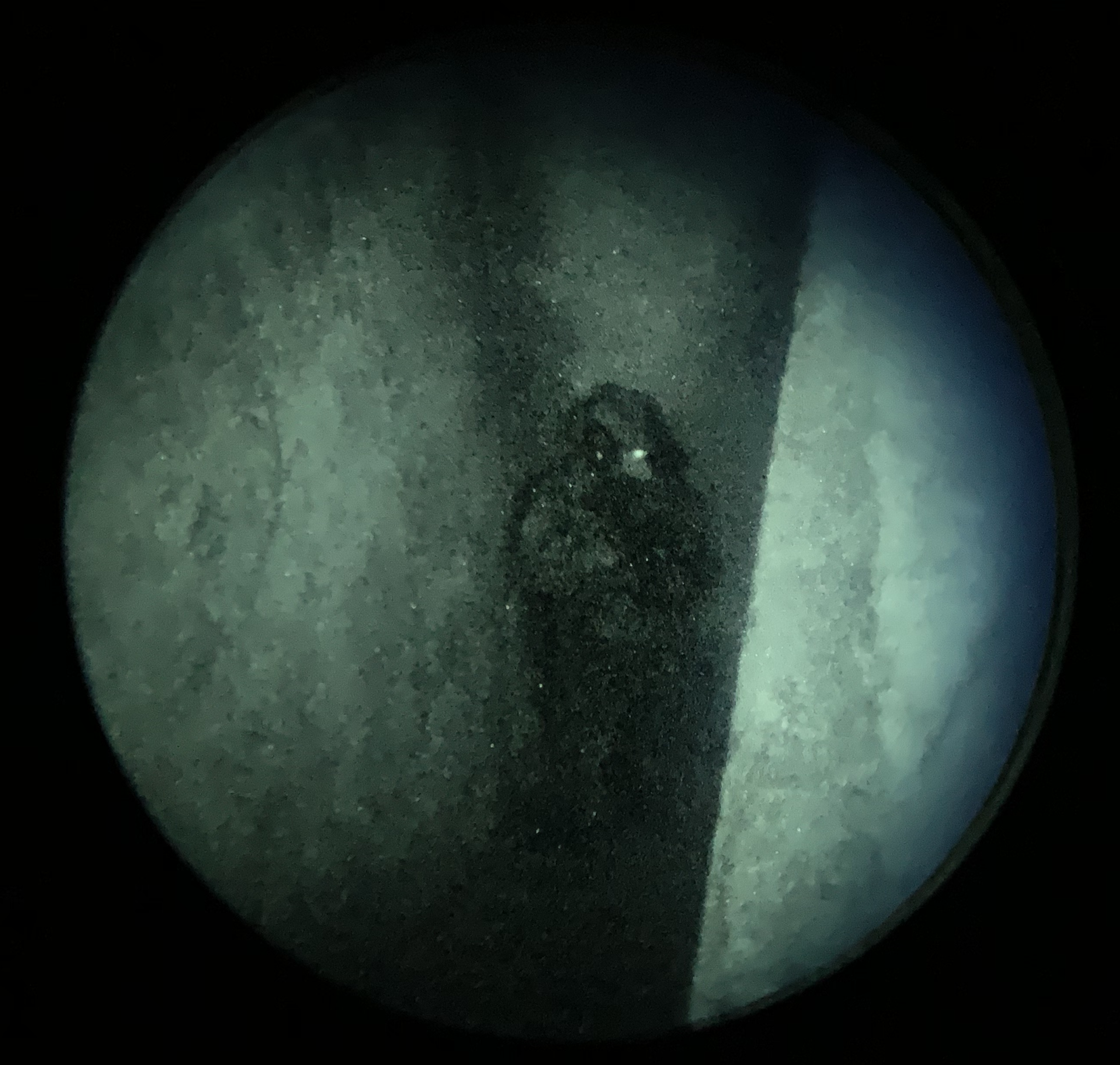
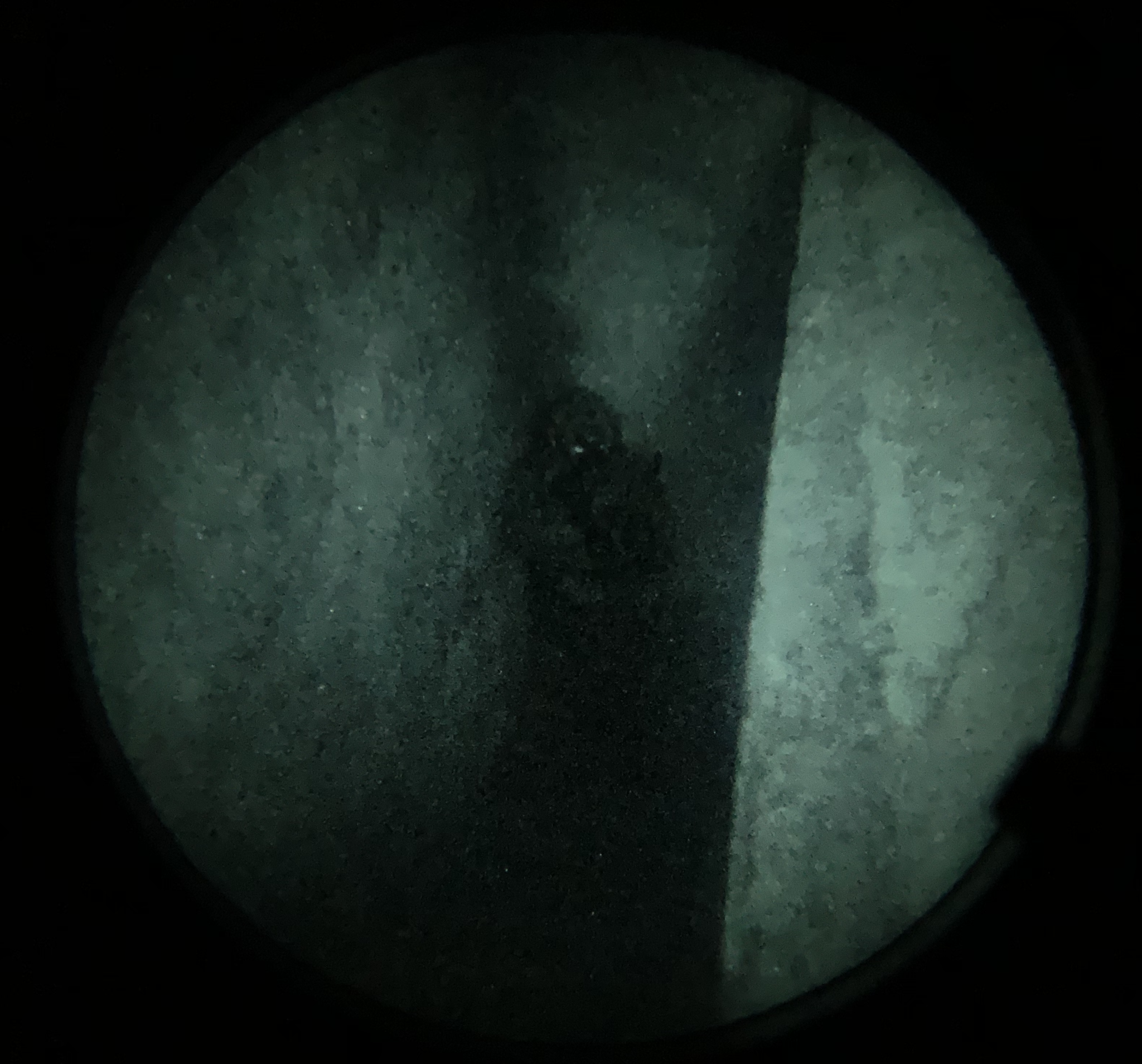
Photonis 4G vs Photonis Commercial
How much usage the device gets?
If you use your NVD less than 500h / year (40 hours / 6 nights a month) – does it really matter if the tube lasts 7 000h or 14 000 hours?
For example – most Airsoft players use it less than 10 nights (60 hours) a year. How much you are willing to invest per hour?
Our suggestions for monoculars (without going into detail)
| Budget | ~1000€ | ~2000€ | ~2600€ | ~3500€ | >6000€ |
| Purpose | Scouting | Move & shoot | Dominate other Gen2+ | Compete with Gen3 | Beat average Gen3! YOLO! |
| Recommandation | Sirius | N-14 | GT-14 Photonis Commercial | PVS-14LTE Photonis ECHO | PVS-14 Photonis 4G |
| Pros | Cheap Good light amplification Decent resolution | Good price Good light amplification Decent resolution Small size Lightweight Good optics | Reasonable price Better light amplification Better resolution Small size Lightweight Good optics | A bit expensive, but worth it! Great light amplification Great resolution Small size Lightweight Great optics Autogating High min specs | Money comes and goes! Superb light amplification Great resolution Small size Lightweight Great optics Ultra fast autogating Superb minimum specs Manual Gain Wide wavelength |
| Cons | Inferior optics To big for helmet use Fish-eye-effect | Mediocre resolution Mediocre S/N ratio | Low minimum specs, but mostly awesome tubes | Expensive as hell | |
| Falconclaw’s score for performance gain on previous model (on average) | +100% | +40% | +20% | +20% |
You wanna learn more? Lets talk about optics and IITs (going into detail)...
Optics and housing
Let’s start from housing / optics. There are different housings out there and Falcoclaw provides IITs with 4 different monocular housings (Sirius, N-14, GT-14 and PVS-14LTE).
Falconclaw’s score for optics: Optics performance is a really important part of your NVD. In our opinion, N-14, GT-14 and PVS-14 have pretty similar quality while Sirius has lower optics performance. We have scored the optics of those devices in order to help you with your decision. It is important to point out that Sirius has fish-eye effect, which means that it is difficult to move around with this device without your head getting dizzy.
Weight: Gen2+ and Gen3 devices usually weight around 320-340g. Sirius weights 460g and therefore is not convenient to use with helmet, but is usable as a hand-held or weapon-mounted device.
Length: The shorter the device is, the more mobility you have.
Adapter: PVS-14 uses J-ARM to connect to helmet / headset. Sirius, N-14 and GT-14 uses standard night vision adapter (ATN, Armasight etc) to connect to helmet and headset.
Eye relief: Usually not specified, but really important attribute. Basically it measures what is the dimension of your eye sside optics. The higher the dimension, the bigger the “picture”. When you are playing airsoft, then “screen size” is really important because you have protective glasses between the device and your eye and eye protection pushes your NVD further away. Exactly like TV screen size. The further away you are the bigger screen you need.
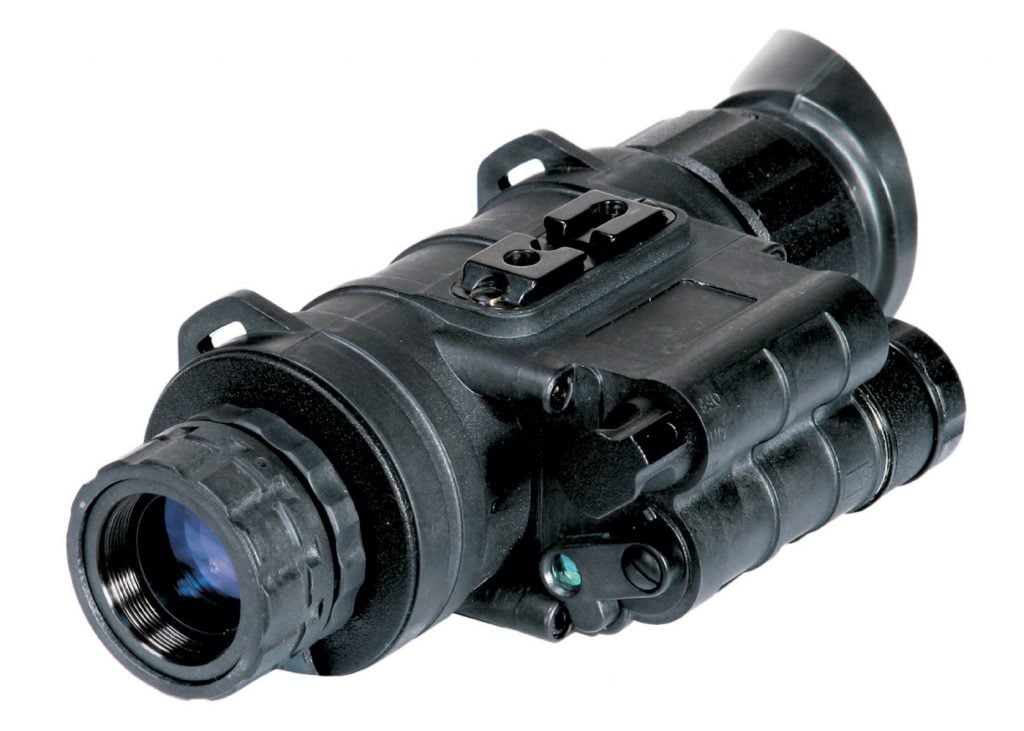
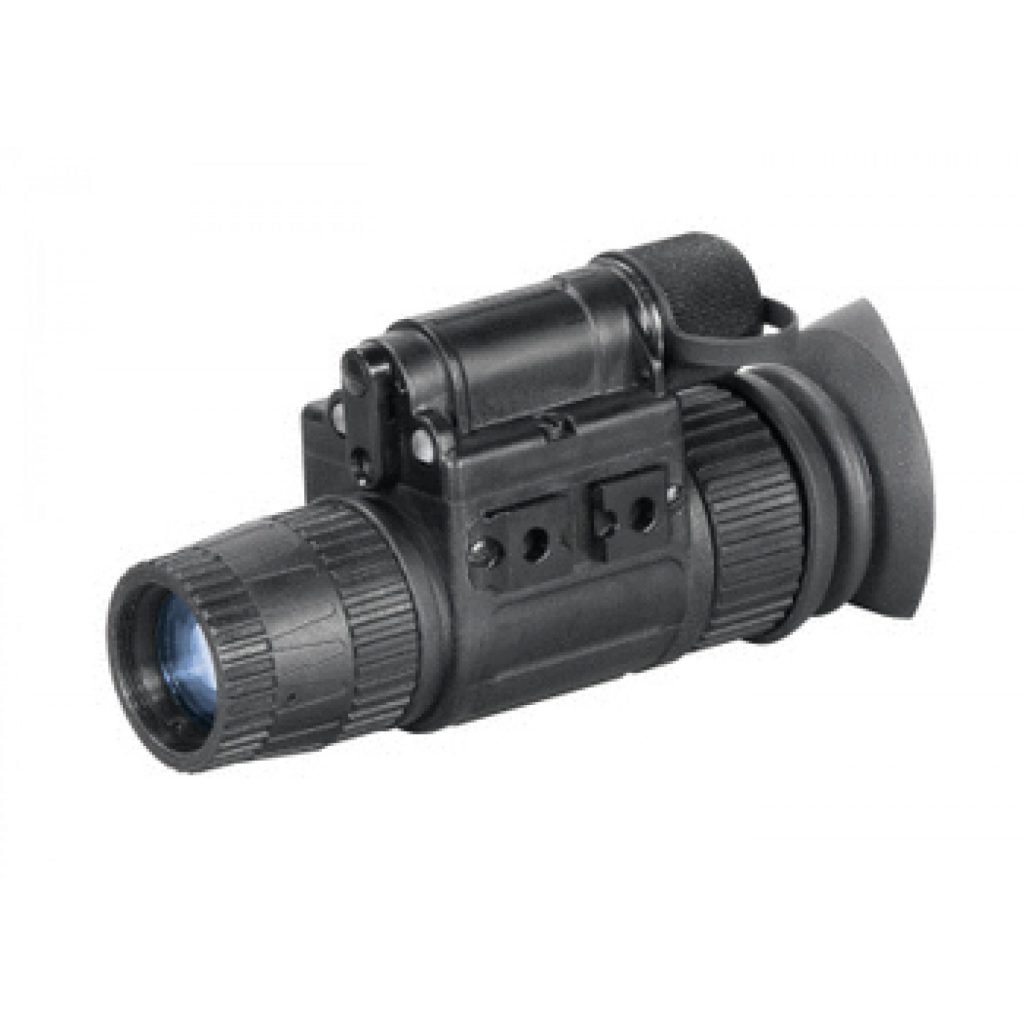
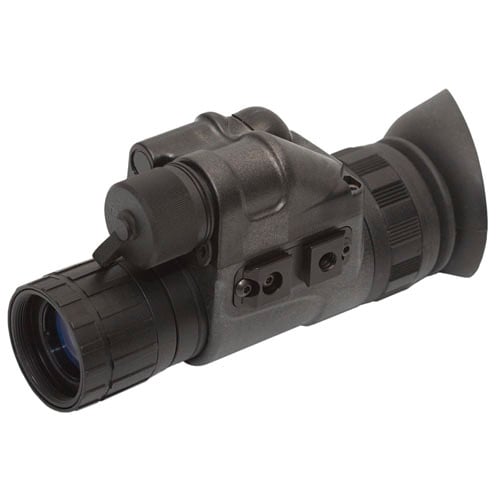
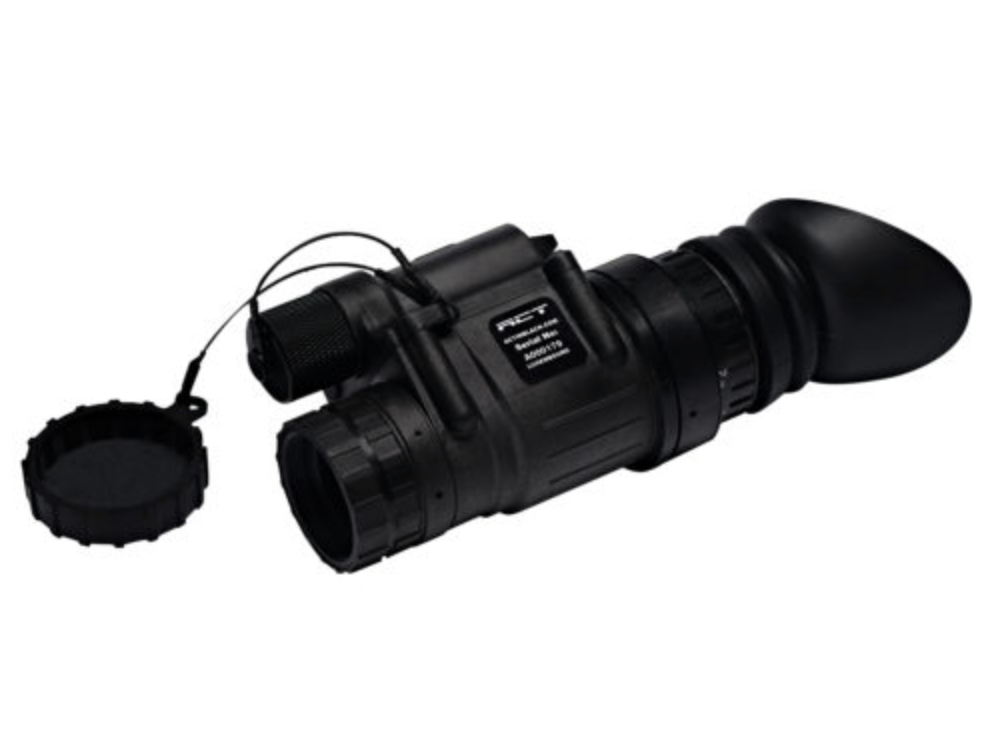
Sirius
N-14
GT-14
PVS-14LTE
| Falconclaw’s score for optics | 3/10 |
| Weight | 460 g |
| Length | 167 mm |
| Adapter | Standard |
| Eye relief | 21.5 mm |
| Manual gain | N/A |
| Falconclaw’s score for optics | 6/10 |
| Weight | 340 g |
| Length | 117 mm |
| Adapter | Standard |
| Eye relief | 25 mm |
| Manual gain | N/A |
| Falconclaw’s score for optics | 7/10 |
| Weight | 320 g |
| Length | 120 mm |
| Adapter | Standard |
| Eye relief | 25 mm |
| Manual gain | N/A |
| Falconclaw’s score for optics | 9/10 |
| Weight | 335 g |
| Length | 107 mm |
| Adapter | J-Arm |
| Eye relief | 25 mm |
| Manual gain | N/A |
Image Intensifier Tube (IIT)
Everyone knows that Gen2+ IIT outperforms Gen1 without braking a sweat. This is due to the fact that in devices starting from Gen2+ you have MCP (Micro-channel plate) which amplifies electrons in addition to having better optics than Gen1.
But it is not a known fact that high-end Gen2+ IITs like Photonis 4G can even outperform a new and high FOM (2100+) Gen3’s in some environments!
What are the parameters to look for in NVD devices?
Resolution
The ability of an image intensifier or night vision system to distinguish between objects close together. Image intensifier resolution is measured in line pairs per millimeter (lp/mm). Typically, the higher the line pair, the better the image resolution. Both higher quality Gen2+ and Gen 3 tubes generally have a resolution between 62 to 72 lp/mm, therefore line pair measurement does not indicate the generation of the tube.
Photocathode Sensitivity
Photocathode sensitivity is a measure of how well the image intensifier tube converts light into an electronic signal so it can be amplified. The measuring units of photocathode sensitivity are micro- amps/lumen (?A/lm) or microamperes per lumen.
Signal-to-Noise Ratio (SNR)
A measure of the light signal reaching the eye divided by the perceived noise as seen by the eye. A tube’s SNR determines the low light resolution of the image tube; therefore, the higher the SNR, the better the ability of the tube to resolve objects with good contrast under low-light conditions. Because SNR is directly related to the photocathode’s sensitivity and also accounts for phosphor efficiency and MCP operating voltage, it is the best single indicator of an image intensifier’s performance.
Figure of Merit (FOM)
Image Intensification tube specification designation, calculated on line pair per mm x signal to noise. (FOM=lp/mm * SNR).
Autogated
Autogated offer the tube better protection and preventing resolution loss in high light conditions.
Black & White Image (White Phosphor, WP)
By using a different kind of phosphor (P45) the image looks like a black & white picture in high definition. For some people these seem to work better than for others. Personal preference.
Standard Gen2+
By Standard Gen2+ we consider regular Gen2+ tubes. There are a lot of vendors who provide devices with standard tubes like Armasight, ATN etc.
Usually you will get a decent device with resolution 45-55 lp/mm, sensitivity around 450-550 ua/lm, SN ratio between 20-22 and EBI around 0.15.
Standard Gen2+ devices are not Autogated.
We don’t provide Sirius and N-14 anymore.
IIT specifications for Standard Gen2+
| Parameter | Min | Average | Max |
| Luminance sensitivity 2850 K. | 350 | 500 | / |
| FOM | N/A | 1000 | / |
| Resolution center | 32 | 50 | / |
| Signal to noise ratio | 12 | 20 | / |
| Equiv. Background illumin. | / | 0.15 | / |
Super-ish Gen2+ Photonis Commercial (XW1441A)
Then there are Photonis Commercial tubes. They are too good to be considered as Standard Gen2+, but due to low minimal specification requirements, we can not categorise them into Super Gen2+ category.
Even though we have never seen a Commercial IIT that has FOM below 1100, due to low minimal requirements (min fom 380), you can never be sure. If certainty is important, then you should consider ECHO. If budget is limited, going for Photonis Commercial you can always be sure that this devices is enough for Airsoft and is better than Standard Gen2+.
Usually the resolution is round 55-65 lp/mm, sensitivity around 500-650 ua/lm, SN ratio between 20-22 and EBI around 0.15.
We provide Photonis Commercial in GT-14 housing.
Photonis Commercial devices are not Autogated.
IIT specifications for Photonis Commercial:
| Parameter | Min | Average | Max |
| Luminance sensitivity 2850 K. | 270 | 570 | / |
| FOM | 380 | 1300 | / |
| Resolution center | 32 | 60 | / |
| Signal to noise ratio | 12 | 21 | / |
| Equiv. Background illumin. | / | 0.15 | / |
With Photonis ECHO tubes you can already be sure about their high quality. Minimum FOM is 1600.
Photonis ECHO devices come in reality from 4G production line. The main difference between ECHO and 4G is that ECHO did not met the high quality standards that 4G has. For example it has lower FOM and/or more black spots than allowed for 4G. Using those devices in Airsoft, you can tell the difference, but it will not affect your ability to dominate the night and players with Gen2+ night-vision devices.
Why not go for 4G? Simple – 4G costs 2x more than ECHO. If your life depends on NVD performance, you should pay 2 times more for higher quality specs, but for Airsoft the difference in specs is very small compared to difference in price.
We provide Photonis ECHO that is Produced by ACT. ACT is leading Night Vision monocular and binocular producer in Europe.
Usually the resolution is round 65-70 lp/mm, SN ratio between 24-28 and EBI around 0.12.
Photonis ECHO devices are Autogated.
IIT: Photonis ECHO
| Parameter | Min | Average | Max |
| Luminance gain (at 20 μlx) | 8000 | / | 12000 |
| FOM | 1600 | 1715 | 2000 |
| Resolution center | 57 | 65 | 74 |
| Signal to noise ratio | 24 | 25 | / |
| Equiv. Background illumin. | / | 0.12 | / |
Questions? Something does not make sense?

